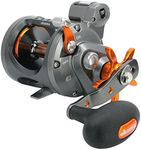We Use CookiesWe use cookies to enhance the security, performance,
functionality and for analytical and promotional activities. By continuing to browse this site you
are agreeing to our privacy policy
Best Trolling Reels
From leading brands and best sellers available on the web.#2

Penn
Penn WAR30LW Warfare Level Wind Reel
View Product
#3

SHIMANO
Shimano SHIMCR4000GTPMoocher Plus Mooching/Trolling Reels
View Product
#4

Abu Garcia
Abu Garcia Classic Baitcast Reel, C4-6600
View Product
#5
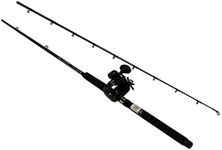
Okuma
Okuma Great Lakes Trolling Combo with Magda 30, 8'6"/Medium
View Product
#6
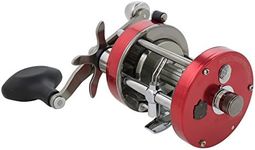
Abu Garcia
Abu Garcia C-7001 Ambassadeur Baitcast Reel Left Hand
View Product
#7

SHIMANO
17%OFF
Shimano Triton Lever Drag 20BX Reel
View Product
#8
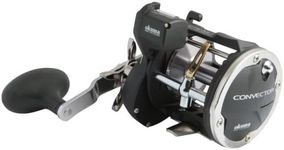
Okuma
Okuma Convector Star Drag Line Counter Reel (30/330)
View Product
#9
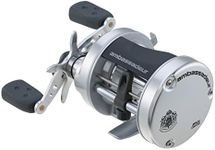
Abu Garcia
Ambassadeur S Round Reel 11lb | 4.9kg
View Product
#10

Penn
Penn Level Wind Reel 309M 1152034
View Product
Buying Guide for the Best Trolling Reels
Choosing the right trolling reel is essential for a successful and enjoyable fishing experience. Trolling reels are designed to let you drag bait or lures behind a moving boat, targeting fish that swim at various depths. The right reel will make your fishing smoother, help you handle bigger catches, and last longer in tough conditions. To pick the best trolling reel for you, it's important to understand the key features and how they match your fishing style, target species, and environment.Line CapacityLine capacity refers to how much fishing line the reel can hold, usually measured in yards for a specific pound-test line. This is important because trolling often requires letting out a lot of line to reach the right depth or distance from the boat. Reels with higher line capacity are better for deep-sea or big-water trolling, where you might need hundreds of yards of line. For smaller lakes or targeting smaller fish, a moderate line capacity is usually enough. Think about the size of fish you want to catch and the waters you’ll be fishing in—bigger fish and deeper waters call for more line.
Drag SystemThe drag system controls how much resistance a fish feels when it pulls on the line. A smooth, strong drag is crucial for fighting big fish without breaking your line. Drag systems are usually rated by the maximum pounds of pressure they can apply. Light drag is fine for small fish, but if you’re after large species like salmon or tuna, look for a reel with a higher drag rating and smooth operation. Match the drag strength to the size and power of the fish you expect to catch.
Gear RatioGear ratio tells you how many times the spool turns for each turn of the handle. A higher gear ratio means faster line retrieval, while a lower ratio gives you more cranking power for fighting big fish. For trolling, a moderate gear ratio is often best, as it balances speed and power. If you plan to target fast-swimming fish or need to bring in line quickly, a higher gear ratio is helpful. For heavy, hard-fighting fish, a lower gear ratio gives you more control and strength.
Frame MaterialThe frame material affects the reel’s strength, weight, and resistance to corrosion. Common materials include graphite, aluminum, and sometimes stainless steel. Aluminum frames are strong and durable, making them good for saltwater and big fish, but they can be heavier. Graphite is lighter and more affordable, but not as tough as aluminum. If you fish in saltwater, look for corrosion-resistant materials. Choose a frame that matches your fishing environment and how much weight you’re comfortable handling.
Levelwind MechanismA levelwind mechanism automatically guides the line evenly across the spool as you reel in. This helps prevent tangles and makes it easier to manage your line, especially with thicker or braided lines. Some trolling reels have this feature, while others do not. If you’re new to trolling or want less hassle, a levelwind reel can be a good choice. Experienced anglers sometimes prefer reels without levelwind for more direct control, especially when using heavy lines.
Line CounterA line counter shows how much line you’ve let out, which is very useful for trolling because it helps you place your bait at the right depth or distance. This feature is especially helpful if you want to repeat successful setups or fish at specific depths. If you like precision and consistency, look for a reel with a built-in line counter. If you’re more casual or fish in shallow waters, you might not need this feature.
Ball BearingsBall bearings help the reel operate smoothly and affect how easy it is to retrieve line. More bearings usually mean smoother performance, but quality matters more than quantity. For trolling, a reel with a few high-quality bearings is usually enough. If you want a smoother feel and less effort when reeling in, look for reels with well-sealed, corrosion-resistant bearings, especially for saltwater use.
